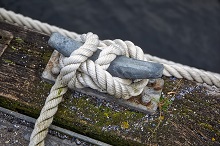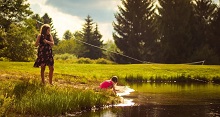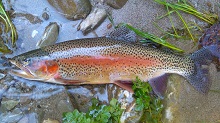Maple Leaves Make Fish
Canadian Angling.com (Jan. 24, 2011) Zooplankton are an extremely important food source for all aquatic animals especially fish. Zooplankton feed off of Phytoplankton, making them the second link in the marine food chain. Zooplankton then gets eaten by fish and larger crustaceans. Many trout fry actually feed on zooplankton as soon as they emerge from their eggs (except for brown trout fry that feed on algae). Many believed that zooplankton were only algae feeders, but new research published in the Proceedings of the National Academy of Sciences found that about 1/3 of their food comes from material that comes from land in lake watersheds like leaves, roots, logs, etc.
The research helps scientists understand the complex roles of a watershed and how an ecosystem interacts. Scientists knew that animals that lived in the lakes bottom relied on food from the land but they didn’t realize that open water animals (zooplankton) also consume this material.
Cary Institute of Ecosystem Studies limnologist Dr. Jonathan J. Cole reported that, “Our work changes the paradigm for how we describe the environment that supports fish. Zooplankton are one of the pillars of the aquatic food web. And while they do feed on algae, they also rely on materials derived from maple leaves, pine needles, and whatever else comes in from the surrounding watershed.”
Cole and his colleagues used isotopes of nitrogen, carbon, and hydrogen to trace the food source of three zooplankton species: Daphnia, Holopedium, and Leptodiaptomus. The samples were taken from Paul Lake and Crampton Lake in Wisconsin. They chose theses two lake because one lake (Paul Lake) was a small lake with normal nutrient levels and the second lake (Crampton Lake) was a larger nutrient poor lake.
Many scientists believed that zooplankton feed exclusively on algae, but their analysis showed different results. What they found was that their 1/3 of their food source was actually from the land. When algae levels were low, zooplankton used a higher amount of their diet from such things as leaves, roots, logs, etc.
Cole said that, “Historically, lake ecosystems have been studied in isolation. Yet we know lakes are connected to their watersheds and organic matter from land enters lakes in the form of run-off or ground water.” He added that “Our study adds to the growing body of evidence that aquatic food webs are subsidized by these inputs.”
Wayne Sheridan



